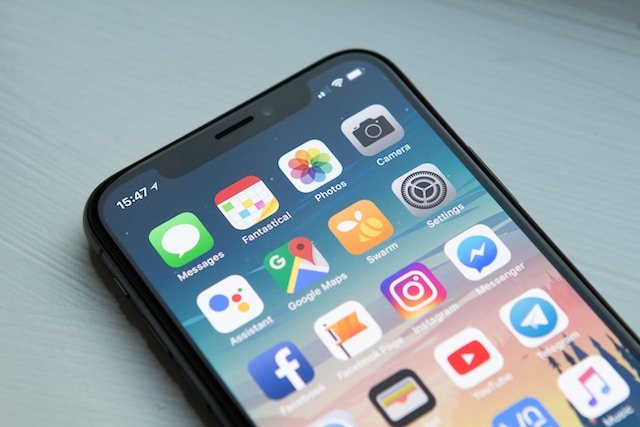See How Many Downloads An App Has?
The number of downloads an app has is vital to assess its popularity and impact. This measure reveals the level of interest and acceptance. The developers and other stakeholders frequently analyze download figures to evaluate the app’s performance and pinpoint areas to improve. Furthermore, high numbers of downloads could attract potential investors, users, as well as advertisers, thereby increasing the app’s popularity and potential to grow.
How Can I Find Out The Number Of Downloads My App Has On The Play Store

The Developer Console on Google Play is the source of information about the performance of your application. Log in to the Developer Console Account. If you’re managing multiple applications, choose the appropriate app from the available list.
Accessing the “Statistics” Section
After you’ve chosen your application After that, click your “Statistics” tab. This section provides a variety of data about the number of downloads, ratings from users reviews, as well as other information.
Interpreting the Download Numbers
In”Statistics” in the “Statistics” section, you’ll see the “Download” metrics. The “Total installs” metric provides you with a summary of the number of times your app was downloaded. It is a total count of all installs that help you comprehend the appeal of the app.
Refining the Data
To get a deeper analysis, you may further modify the data according to certain time frames. The Developer Console lets you select various time periods like daily and weekly, monthly, and even custom-made periods. This flexibility lets you look at patterns and increases in downloads as time passes.
Understanding User Acquisition
In addition to other than the “Total installs” metric, it’s crucial to look deeper into the ways that users are finding and installing your application. The “User Acquisition” section within the Developer Console provides valuable information about the factors leading people to install your application. It can be a combination of categories such as Organic search Direct, Referral, Direct and paid campaigns.
Analyzing User Reviews and Ratings
While the number of downloads is important but understanding the mood of users is equally crucial. The Play Store’s “Ratings and Reviews” section gives insight into feedback from users and ratings. Positive reviews show satisfaction with the product, While negative reviews may indicate areas that need improvement.
Leveraging Google Analytics for In-depth Insights
To gain even more detailed insight, you should consider the possibility of integrating Google Analytics with your app. Google Analytics offers a deeper analysis of the behavior of users, their demographics, and the interactions in your application. This integration could provide an overall view of the app’s performance beyond download statistics.
Using Third-Party Tools
Apart from the tools built into the Play Store, other third-party analytics platforms provide more detailed information about the app’s downloads and performance. These platforms typically offer advanced features and a customizable dashboard that can be tailored to your particular needs.
What Is The Best Way To View All Downloads For Android

Although the Google Play Store offers direct data on the total number of downloads made by apps, there are third-party tracking apps that offer more extensive information. These tools may provide additional data, including the trends in downloads, demographics for users, and much more. Popular third-party tracking tools include:
- App Annie: The platform offers detailed market research on apps, including total downloads revenues estimates, as well as competitor analysis.
- Sensor Tower: With Sensor Tower, you’ll get insights into the app’s downloads, and reviews by users as well as optimize your app’s performance.
- Mobile Action: It not only tracks downloads but also assists in determining the app’s popularity in app stores.
Analyzing Developer Console
If you’re an app developer and want to keep track of the downloads for your app, the Google Play Developer Console offers an abundance of information and insight. Take these actions:
- Developer Console: Access Log into the Google Play Developer Console account. Google Play Developer Console account.
- Pick Your App: Select the application you would like to study.
- Statistics Access”Statistics”: Go to the “Statistics” section to view the full details of your app’s downloads and revenues and engagement with users.
Importance of Tracking Downloads
The ability to determine the total number of downloads for an app is important for both developers and users. It is for users that it assists in assessing the popularity and credibility of the app. The high numbers of downloads often signify that the app is trustworthy and well-received by the community.
However, developers can make use of data from downloads to evaluate the effectiveness of their apps and make educated decisions about the release of updates, marketing strategies, and other possible enhancements.
Where Can I Get The Stats Of My app

App statistics can provide many details about the way users use your application as well as its popularity, engagement, as well as areas of improvement. When you analyze these stats, you will gain a thorough understanding of the behavior of users and can help you improve the performance of your app and increase satisfaction with your customers. This is a brief explanation of why statistics on apps are important:
Monitoring User Engagement
App stats lets you measure user engagement metrics like the number of daily active users (DAU) and Monthly active users (MAU) sessions, duration and retention rates. This information helps you understand the frequency with which users use your application, how long they are using it, and if they keep using it for a long time.
Identifying Popular Features
When you analyze specific metrics related to features and metrics, you will be able to determine what features within your application are most popular with users. This helps you concentrate your efforts on improving existing features as well as improving the ones that aren’t being utilized.
Tracking Conversions and Revenue
For companies with apps that generate revenue monitoring in-app purchases as well as other conversions is essential. App stats provide insight into what products or services are selling well and what ones might require tweaks to boost sales.
Improving User Experience
The user experience (UX) is an essential aspect of the app’s success. App statistics provide insights about UI components that are used by users most. This allows you to improve layouts buttons, layouts, and pathways for a seamless experience.
Sources of App Stats
After we’ve identified the significance of app data, Let’s take a look at the many sources from which you can get these important insights:
App Store Analytics
Both Apple App Store and Google Play Store have built-in analytics that allow app designers to create apps. They provide information on downloads, reviews by users, and ratings. Additionally, you can access data on demographics of the users, helping you customize your app to your intended audience.
Third-Party Analytics Tools

There are a variety of analytics tools from third-party vendors with distinct features and information. Google Analytics for Mobile Apps, Mixpanel, and Flurry Analytics are only a few examples. These tools offer advanced tracking capabilities as well as customizable dashboards that monitor different indicators.
In-App Analytics
Integrating in-app analytics frameworks into your application allows you to gather data about the user’s behavior within your application. You can monitor specific actions taken by users, for example, swipes, clicks, or interactions with different elements. This information is extremely useful to determine the user’s journey and adjust your app accordingly.
Crash Reporting Tools
App crashes can result in frustration for users and a loss of revenue. Tools for reporting crashes, such as Crashlytics and Bugsnag, aid in identifying and identifying app crashes and provide insight into the root cause. This information is essential to maintain an app that is stable and reliable.
Making informed decisions using Application Stats
The gathering of app statistics is only the beginning; the true value is in the information you gather, along with the action you can take. Here’s how you can get the most value from your app’s statistics:
Set Clear Objectives
Determine your goals and objectives prior to exploring the information. Are you seeking to improve the engagement of users and revenue growth or improve the user experience? Setting clear goals guides your analysis and decision-making.
Regular Monitoring and Analysis
Statistics for apps aren’t permanent. Continuously analyze and monitor the data in order to find patterns, trends, and irregularities. This proactive approach enables you to tackle issues quickly and make the most of opportunities that arise.
A/B Testing
App statistics can also assist in the A/B test. By comparing the performances of different variants of your application, or particular features, you can identify which variants resonate most with customers.
Continuous Improvement
Make use of the insights gained from stats on your app to encourage constant improvement. If it’s improving user flow and loading times or fine-tuning features, the information you gather will assist you to make informed choices to improve your application.
FAQ’s
How can I see how many downloads an app has on the App Store or Google Play Store?
Open the App Store, search for the app, and scroll down to the “Ratings & Reviews” section. The approximate number of downloads is often mentioned there. Open the Google Play Store, search for the app, and scroll down to the “Installs” section. The app’s download range (e.g., “1 million+”) gives you an idea of its popularity.
Can I find out the exact number of downloads for any app?
No, both the App Store and Google Play Store generally provide download ranges instead of exact numbers. They might display a range like “10,000,000 – 50,000,000” instead of an exact figure like “30,256,789.”
Are there any third-party tools or websites that provide more accurate download statistics?
Yes, some third-party platforms and websites offer estimates of app download numbers based on various data sources. However, these estimates might not be completely accurate. Some popular platforms include Sensor Tower, App Annie, and similar analytics tools.
Do app developers have access to the exact download numbers for their apps?
Yes, app developers typically have access to more accurate download statistics through their respective developer dashboards. Platforms like Apple Developer and Google Play Console provide developers with detailed information about app installations.
How often are app download numbers updated?
The download numbers on app stores are not updated in real-time but rather periodically. The frequency of updates can vary, but it’s common for these numbers to be updated daily or weekly.
Do download numbers reflect the current number of active users?
No, download numbers reflect the total number of times an app has been downloaded and installed, not the current number of active users. An app might have a high number of downloads but might not necessarily have a high number of active users if people have uninstalled it or stopped using it.


















